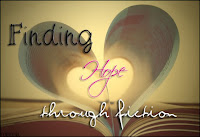I recently had the pleasure of reading Jordyn Redwood’s
latest book, ‘Peril.’ I
will be sharing my review tomorrow; please make sure to return! Today, please
enjoy this guest blog from the author!
Before we
get to the guest blog post, please take a peek at a synopsis of the novel, as
well as a biography of Ms. Redwood.
Peril Synopsis:
Medical mystery thrillers with a chilling diagnosis—the only
cure is to keep reading! Dr. Reeves implants superior memory cells into
soldiers’ brains with amazing results—until negative symptoms appear. When his
daughter is taken hostage by enraged research subjects, can he discover the
answer they demand before Morgan’s life is in serious Peril?
Biography:
Jordyn Redwood is a pediatric ER nurse by day, suspense
novelist by night. She hosts Redwood’s Medical Edge, a blog devoted to
helping contemporary and historical authors write medically accurate fiction.
Her first two novels, Proof and Poison, garnered starred reviews from Library Journal and have been endorsed by the likes of
Dr. Richard Mabry, Lynette Eason, and Mike Dellosso, to name a few. Proof was shortlisted for the 2012 ForeWord Review’s BOTY Award, 2013
INSPY Award and the 2013 Carol Award. You can connect with Jordyn
via her website at www.jordynredwood.com.
Thriller
Tension: Killing your Reader – by Jordyn Redwood
Are you a
lover of suspense novels? I know I am. I read and write them. There are many
authors I admire but those I crave and anxiously anticipate their next novels
are those that have so much tension on the page, you can barely
keep the book in
your hands without throwing it aside because you must read but can’t bear to
read the next sentence.
That is
perfection.
As an
author myself, I want to create that experience for my readers. Tension. Angst.
Worry.
Here are
five tips to increase the tension in your suspense manuscripts. How many have
you tried?
1. There
must be death or danger of death in the first chapter: Recently, I reviewed
a manuscript that’s major plot surrounded children being kidnapped. The first
chapter had a father and son at an amusement park. The son goes missing for a
short amount of time (maybe 1-2 hours) then is found and returned back to the
father. Not a scratch on the child to be seen. Video showed an employee took
the boy somewhere he shouldn’t have. Hmm—okay. Nothing really too frightening
is happening. How do I know it just wasn’t an employee being helpful when the
boy lost sight of his father? Too slow. Particularly for suspense, the reader
must be worried in the first chapter—first page is best. Most agents/editors
make a decision about your ms after reading only the first page.
2. If
you’re bored, the reader is falling asleep: If the passage you’re editing
bores you as the author, use this as a signal to change the scene. Possibly, it
needs to be outright discarded. Another option is to write the chapter in
another POV. Bring in a character that can add conflict. Or, as James Scott
Bell says—have someone walk in with a weapon.
3. Say
what shouldn’t be said: For this, I’m not talking about vulgar language. In
my second novel, Poison, I have two
characters (Nathan and Lee) that were part of a hostage situation in my first
novel, Proof. It was one of my
favorite scenes to write and you can find it here (Chapter 2). In the
second novel, these two are teamed up working a case. In Proof, Lee disagreed with Nathan about when SWAT should respond and
people died. In the original scene, Lee says, “Nathan, I don’t blame you for what happened.” Then I thought, why
shouldn’t he blame him? Adds tension. Adds conflict. Adds dimension to their
relationship. So—no more Mr. Nice guy and Lee let Nathan have it. Warranted or
not. I love dialogue in fiction for this reason—you can say things that in real
life you would normally stay mum about or gloss over in a PC way.
4. Use
descriptive elements to add spookiness. The challenge of the fiction author
is to use your prose to engage all five senses in a way that will add tension
for the reader. The master of descriptive, tense prose (in my opinion) is Dean
Koontz. Here’s one example of his from The
Moonlit Mind. “His breath plumes from him as if he’s exhaling ghosts.” I
just love that. Does that not add to the tension? This also speaks to a concept
that Donald Maass (his books on writing are a must read) teaches about called microtension. In a suspense novel,
there’s the overall story arc of murder and mayhem. Microtension is ensuring
that each sentence in the novel
propels the reader forward to the point that they cannot set your novel down.
5. Make
it look structurally pleasing: There are several techniques you can use in
the structure of your novel that will quicken its pace. Short chapters. Good
use of sentence fragments. James Patterson is famous for this. But also, long
sections of description will make suspense readers eyes gloss over. Shorter
paragraphs interspersed with dialogue. Not every sentence of dialogue needs a
tag as well.
Who
are some of your favorite suspense authors and why? What are some techniques
you’ve used to increase the tension of your manuscripts—suspense or otherwise?
--------------------
Thanks so much, Jordyn, for sharing this interesting info with us! Please
remember to come back to my blog tomorrow to see my review; thanks!




























.jpg)






